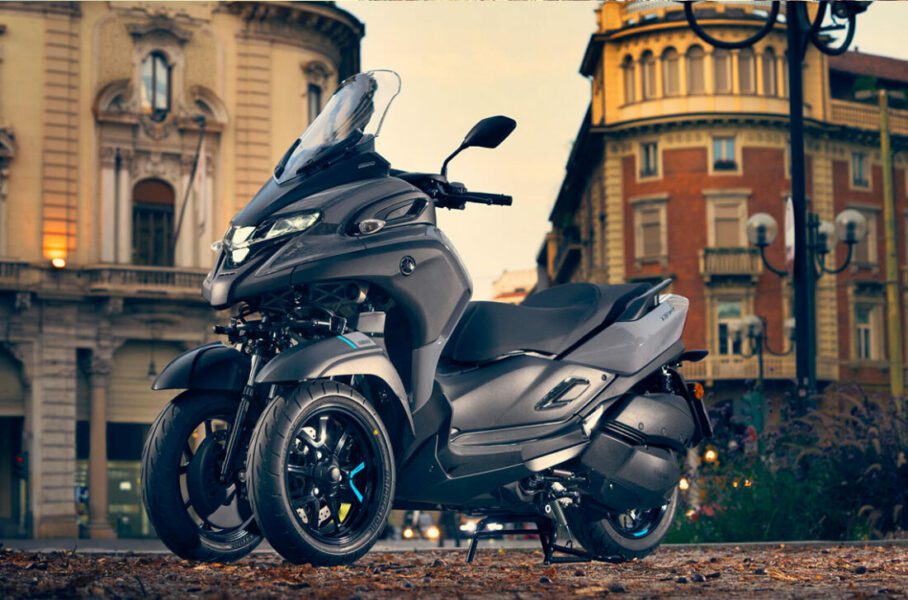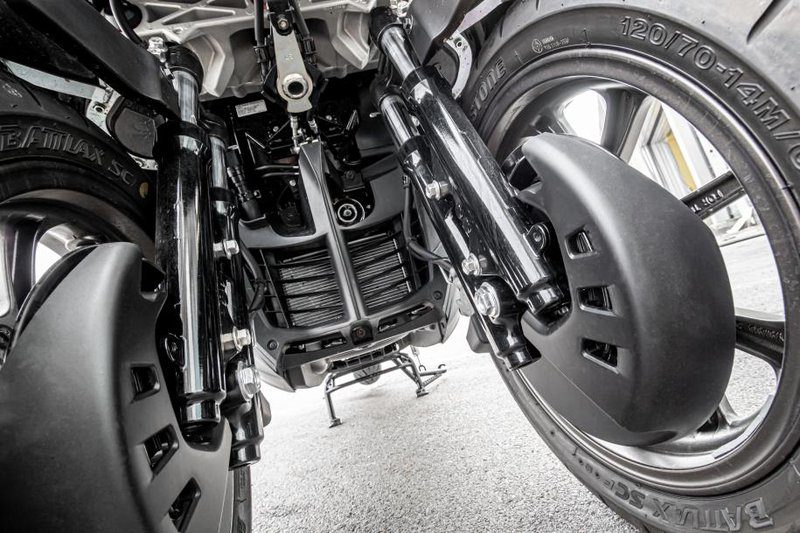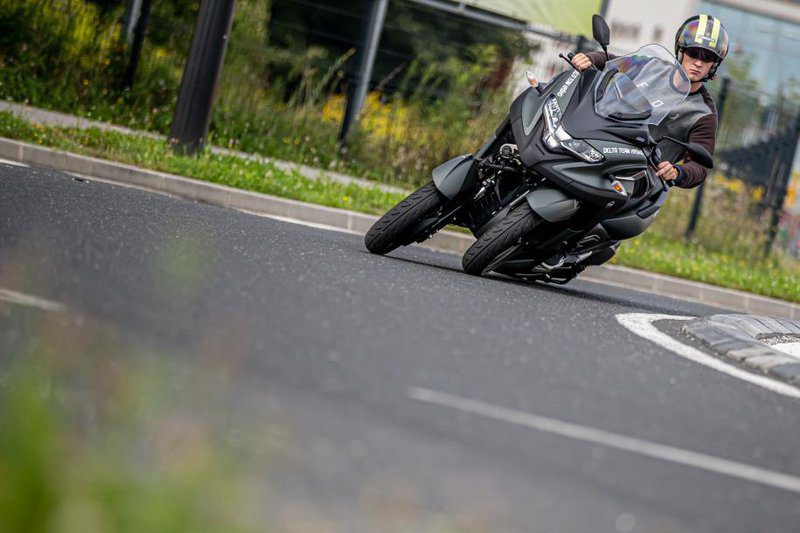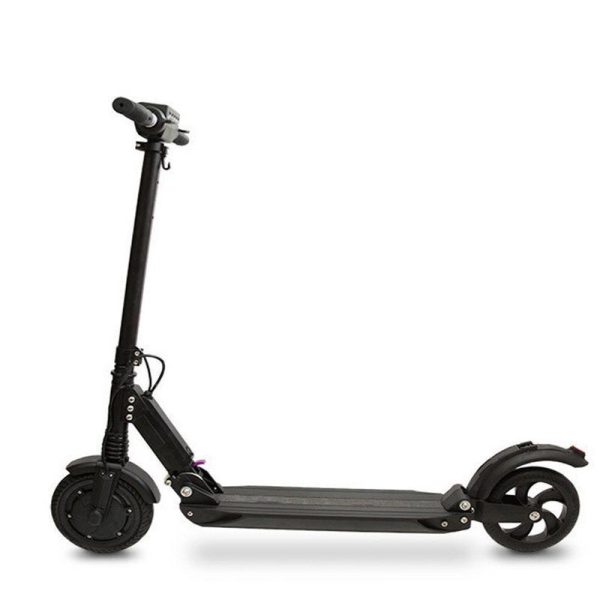
Test: Yamaha Tricity 300 // Great wishes
The Yamaha Tricity 300 is this year's absolute newcomer to the three-wheeled scooter class, a class that, when it comes to the target group of buyers, isn't really aimed at motorcyclists at all. With the Tricitia 300, Yamaha joins a vibrant group of scooters with a Category B driver's license. And, as you probably already found out, there is no shortage of them on our roads.
As a result, I could end up in this post Yamaha Tricity 300 which immediately put it right next to European competitors who not only invented this class, but also mastered it very well. But I won't. Firstly, because there will be enough time for this, and secondly, because the offer of Yamaha tricycles, despite a similar idea, is diverse enough to be presented to your readers in more detail.
Yamaha first pleasantly surprised us five years ago with the lightness of its first three-wheeled motorcycle, the Tricity 125/155, and then almost shocked us two years ago with the superb ride quality of the Niken three-cylinder. While the front axle design of the former is relatively simple (but very efficient), the latter is technically much more complex and thus, in terms of smoothness, it is also fully equivalent to classic motorcycles. The problem with the other is that (thank goodness) he doesn't drive a Category B car. The same is with the first one, but with the difference that due to the small engine there is enough breathing both for the city and the suburbs. However, Yamaha has established itself as that he is good at designing tilting tricycles.
The intermediate, or Tricity 300, is therefore a logical consequence of the above. The front design looks more like the larger Niken., but with the difference that two classic double forks are installed on the inner side of the wheels. While the rear of the scooter is from the rear seat, which also hides a 292cc single-cylinder engine. Cm and 28 "horsepower", almost entirely borrowed from the XMax 300, the front end is much larger and, of course, heavier. Thus, the weight of the scooter is compared to a standard two-wheeled XMax (180 kg) for concrete 60 kg. There's no question that this affects the weight-to-power ratio, so I'm just guessing it might be better to provide a rear end with all related tech for the larger 400cc XMax, which is actually more expensive. ...

I will not write that Yamaha's horses are especially crazy, but in combination with the CVT transmission they are very lively and the scooter quickly and sovereignly passes intersections, and on highways the three-digit number is displayed very quickly on the speedometer. ... So there is enough liveliness.
Similar to the Niken, the Tricity has a front suspension versus a rear suspension. irregularities swallow incredibly gently... If you punch a hole with the left front wheel, even part of the impact will not be transferred to the right and vice versa. Front suspension comfort is above average, but very little feedback is sent to the steering wheel thanks to the generous steering wheel. Thus, most of the time, the driver does not even feel what is happening under the front wheels, which does not mean that he cannot trust the scooter when cornering. The fact that the front wheels retain a high degree of grip both when leaning and when braking is anchored in the driver's subconscious for miles, and therefore the ride becomes more relaxed, regardless of the condition of the road surface.

The Tricity 300 is capable of cornering. at an angle from 39 to 41 degrees, This means that you will pass the city intersection nicely and too quickly, but you will be safe. However, I recommend that you balance courage and common sense, as the B-pillar will touch the ground sooner or later. At this time, the mass of the front end will be transferred to the inner wheel, and as a result, the physical laws of the tire's grip will slightly change. Tris in such situations does not hesitate to forgive and allows for corrections, but, as already mentioned, it is still good to know that the seeming one hundred percent stability also has its limits.
Tricity especially stands out for its size, which also offers many benefits. There is excellent wind protection behind the generous front end, and the space under the seat is not depleted for everyday needs. In terms of comfort and space, I only lacked a useful box for small things in front of the driver, otherwise the comfort and ergonomics section deserves an excellent rating. The standard equipment it covers is definitely worth mentioning. proximity key, anti-slip adjustment, ABS, the ability to "lock" the front axle and the parking brake.

Photo: Uroš Modlič.
Basic data
Sales: Yamaha Motor dating in Slovenia, Delta Team doo
Base model price: 8.340 €
Test model cost: 8.340 €
Technical information
engine: 292 cm³, single cylinder, water-cooled, 4T
Power: 20,6 kW (28 hp) at 7.250 rpm
Torque: 29 Nm at 5.750 rpm
Energy transfer: variomat, Armenian, variator
Frame: pipe frame
brakes: front 2x disc 267 mm radial mounts, rear disc 267 mm, ABS,
anti-slip systemSuspension: front double telescopic forks,
rear swingarm,Tires: before 120/70 R14, rear 140/760 R14
Growth: 795 mm
Fuel tank: 13 liters
Weight: 239 kg (ready to ride)
We praise and reproach
appearance,
driving performance
front suspension comfort
brakes
spaciousness, wind protection
- There is no box for small things.
– Position pedals harass
– It has a better (more up-to-date) information center
final grade
The Japanese alternative to the European troika already in its first edition turns out to be a fully equal representative of this class. As expected, he shares most of his positive and negative qualities with his competitors, and also gives an impression of superiority and quality. However, we are overwhelmed with the feeling that there will be larger and more powerful versions.

